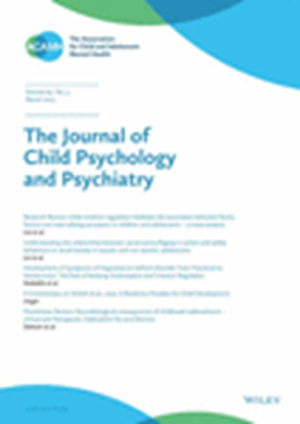Neural correlates of children with avoidant restrictive food intake disorder symptoms: large‐scale neuroanatomical analysis of a paediatric population
IF 6.5
1区 医学
Q1 PSYCHIATRY
引用次数: 0
Abstract
BackgroundAvoidant restrictive food intake disorder (ARFID) is a recently recognised feeding and eating disorder and is characterised by a lack of interest and motivation to eat. Despite burgeoning research, few studies to date have explored the underlying neurobiology of ARFID. Research examining the neural underpinnings of ARFID can greatly assist in understanding different mechanisms that play disorder‐specific roles.MethodsWe studied a total of 1,977 10‐year‐old participants from the Generation R Study, a population‐based Dutch cohort, to cross‐sectionally examine neuroanatomical differences between those with versus without ARFID‐like symptoms. Children were classified with versus without ARFID symptoms using the ARFID Index, a validated evaluative tool comprised of parent‐reported and researcher‐assessed measurements of picky eating, energy intake, diet quality, growth and psychosocial impact to characterise ARFID symptoms in the paediatric population. Global and regional values of surface area, cortical thickness, and volume from T回避型限制性食物摄入障碍症状儿童的神经相关性:对儿科人群的大规模神经解剖学分析
回避性限制性食物摄入障碍(ARFID)是一种最近被认可的进食障碍,其特征是缺乏进食的兴趣和动力。尽管研究迅速发展,但迄今为止很少有研究探索ARFID的潜在神经生物学。研究ARFID的神经基础可以极大地帮助理解发挥疾病特定作用的不同机制。方法:我们研究了1977名来自“R世代研究”(一个以人群为基础的荷兰队列)的10岁儿童,以横断面检查有ARFID样症状者与无ARFID样症状者之间的神经解剖学差异。使用ARFID指数对儿童进行ARFID症状分类,ARFID指数是一种经过验证的评估工具,由父母报告和研究人员评估的挑食、能量摄入、饮食质量、生长和心理社会影响的测量组成,以表征儿科人群的ARFID症状。对有ARFID症状的儿童与无症状的儿童进行T1加权结构磁共振成像(MRI)扫描的表面积、皮质厚度和体积的整体和局部值的比较。结果我们确定了121例(6.1%)有ARFID症状的个体,相对于1865例(93.9%)无ARFID症状的个体。神经解剖学结果发现额叶明显增大(p = 0.00743;d = 0.21)和额上叶(p = 6.56E‐04;d = 0.28)的皮质厚度。结论:这是ARFID神经相关的首次大规模研究,发现ARFID症状儿童的额叶皮质区域厚度较大,提示执行功能在该病的病因学中起作用。
本文章由计算机程序翻译,如有差异,请以英文原文为准。
求助全文
约1分钟内获得全文
求助全文
来源期刊
CiteScore
13.80
自引率
5.30%
发文量
169
审稿时长
1 months
期刊介绍:
The Journal of Child Psychology and Psychiatry (JCPP) is a highly regarded international publication that focuses on the fields of child and adolescent psychology and psychiatry. It is recognized for publishing top-tier, clinically relevant research across various disciplines related to these areas. JCPP has a broad global readership and covers a diverse range of topics, including:
Epidemiology: Studies on the prevalence and distribution of mental health issues in children and adolescents.
Diagnosis: Research on the identification and classification of childhood disorders.
Treatments: Psychotherapeutic and psychopharmacological interventions for child and adolescent mental health.
Behavior and Cognition: Studies on the behavioral and cognitive aspects of childhood disorders.
Neuroscience and Neurobiology: Research on the neural and biological underpinnings of child mental health.
Genetics: Genetic factors contributing to the development of childhood disorders.
JCPP serves as a platform for integrating empirical research, clinical studies, and high-quality reviews from diverse perspectives, theoretical viewpoints, and disciplines. This interdisciplinary approach is a key feature of the journal, as it fosters a comprehensive understanding of child and adolescent mental health.
The Journal of Child Psychology and Psychiatry is published 12 times a year and is affiliated with the Association for Child and Adolescent Mental Health (ACAMH), which supports the journal's mission to advance knowledge and practice in the field of child and adolescent mental health.

 求助内容:
求助内容: 应助结果提醒方式:
应助结果提醒方式:


